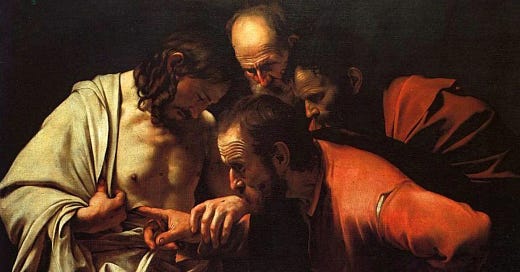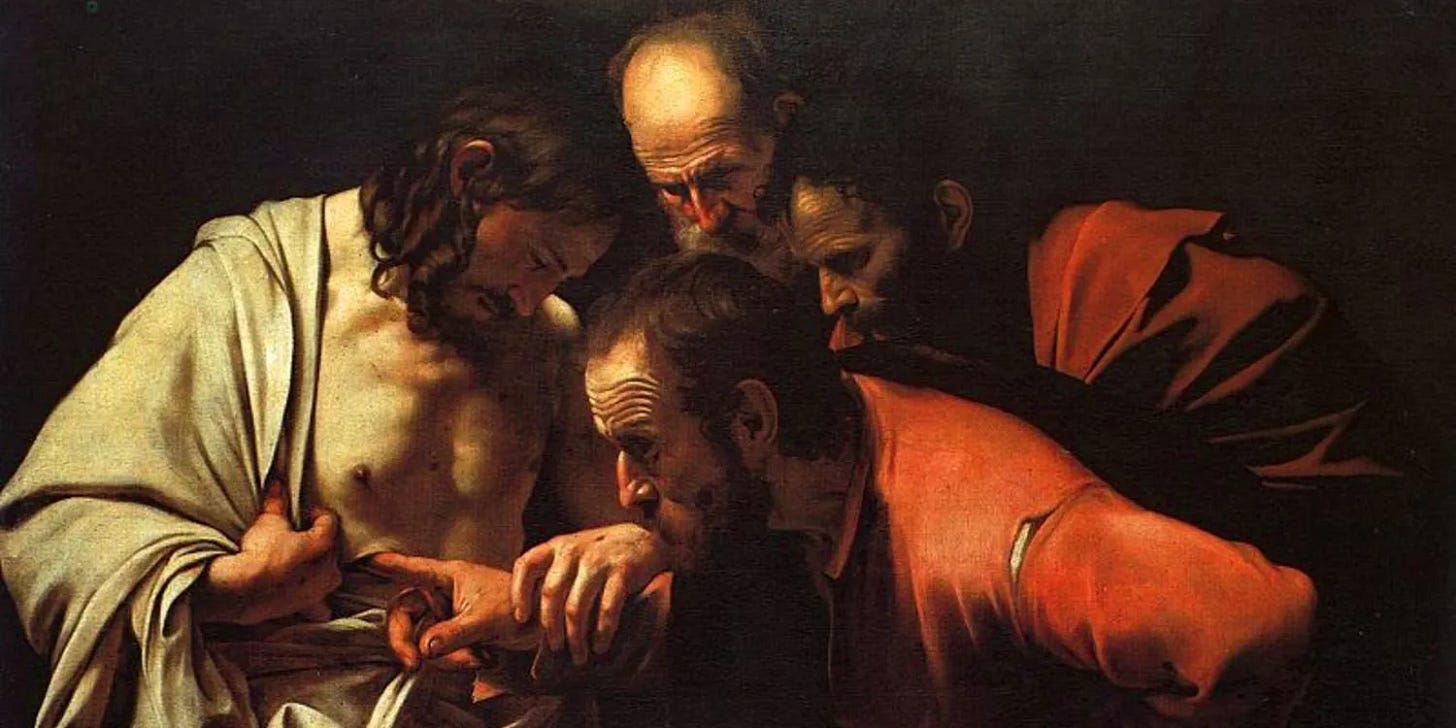
Wounds in Beauty Glorified
Why did Jesus’s body bear the visible marks of his death on the cross? Let’s reflect on four reasons for these beautiful wounds.
Jesus appeared to his disciples after his resurrection, and they came face-to-face with the reality of embodied immortality. The cords of death were broken. Having beaten death from the inside, Jesus rose never to die again. His disciples now drew near to the firstfruits of resurrection glory.
But a surprise was in store for them and for us: Jesus still bore the marks of his suffering. These visible wounds—or scars—were on his hands, feet, and side (Luke 24:39; John 20:25). We might have expected that all signs of suffering would have been removed. We might have imagined that a resurrected body would not bear the marks of a shameful death like crucifixion. Yet there they were—marks of the cross.
Hymnwriter Matthew Bridges spoke of them as “wounds yet visible above, in beauty glorified.” So to put it bluntly: why did Jesus’s body bear the visible marks of his death on the cross? Let’s reflect on four reasons for these beautiful wounds.
1. Identity
First, the visible marks on Jesus’s risen body established that he was the same Jesus they knew had died on the cross. There was continuity of identity. Jesus presses this very point when he tells them, “See my hands and my feet, that it is I myself. Touch me, and see. For a spirit does not have flesh and bones as you see that I have” (Luke 24:39).
The disciples knew that Jesus had been crucified, so the particular marks on Jesus’s body would confirm that the formerly crucified Lord was now in the room with them. This was no case of mistaken identity. When people died by crucifixion, they were not seen later walking around with healed wounds.
On the first day of the week, these disciples beheld the risen Lord—the same Lord they had followed, hoped in, learned from, and mourned.
2. Cross
Second, the visible marks on Jesus’s risen body highlighted the specific wounds inflicted while on the cross. Since Jesus invites his disciples to behold his hands, feet, and side (Luke 24:39; John 20:25), we can imply that the suffering preceding the crucifixion was not evident on his glorified body.
In the Passion accounts of the Four Gospels, Jesus experiences degrees of pain and suffering before the crucifixion. After his arrest in Gethsemane, he is not ushered straight to Golgotha. Jesus is beaten and slapped. A crown of thorns is mashed into his head. Pilate orders a flogging, which would have been a terrible ordeal for anyone to endure, for the rough and jagged objects at the end of the whip would have lacerated his body.
Why Crucifixion?
The scars of Jesus’s risen body do not highlight the suffering before the cross. The particular marks emphasize what he experienced on the cross. His hands and feet had been pierced, and a spear had been thrust into his side. Why should the marks on Jesus’s risen body highlight the cross? Because the crucifixion of Jesus was not a defeat of Jesus.
3. Victory
Third, the visible marks on Jesus’s risen body were not evidence of failure but were a display of victory. The mission of Jesus was the path to Calvary. According to the Scriptures, the Christ would suffer and enter into his glory (Luke 24:26, 46). The crucifixion happened because everything was going right, not because everything had gone wrong.
Therefore, the wounds of Christ were not an embarrassment. They displayed the victory of Christ who had died as our substitute and then rose as our mighty conqueror. At the Last Supper, Jesus told his disciples about the bread and cup, “This is my body, which is given for you. . . . This cup that is poured out for you is the new covenant in my blood” (Luke 24:19–20). For those with eyes to see and understand, the marks on Jesus’s resurrected body were new covenant reminders.
Jesus had been given for his people. He had been lifted up to be poured out. But he laid down his life in order to take it up again. The Venerable Bede said that Jesus’s scars remained not because he was unable to heal them but that he might “wear them as an everlasting trophy of His victory.”
4. Praise
Fourth, the visible marks on Jesus’s risen body will prompt everlasting praise from the saints. The victory of Jesus on the cross was not partial or temporary. Jesus declared his atoning work “finished” (John 19:30), and it is finished forever. Believers will dwell eternally, then, as people covered by the perfect work and righteousness of Christ.
We do not lack reasons to praise the Lord, but the glorified scars on Jesus’s body will stir our praise. Seeing the scars, we will not think less of him but more. We will remember the cross, and in remembering we will worship. The triumphant lion was the slain lamb (Rev. 5:5–6).
Since the age to come will have no deficiency or uncleanness, the marks on the Lord Jesus must contribute to the glorious state of his embodied immortality. According to Thomas Aquinas, “The scars that remained in Christ's body belong neither to corruption nor defect, but to the greater increase of glory, inasmuch as they are the trophies of His power; and a special comeliness will appear in the places scarred by the wounds.”
The saints will know, by these glorified wounds, that Christ has put his love for them on cosmic and eternal display. The marks tell a love story. He has united us to himself through his opened side. His pierced hands hold us in the grip of grace and an unbreakable covenant. His wounded feet are leading us where he has already gone—through the valley of the shadow of death and into the house of the Lord forever.
Guest Post
Mitch Chase (PhD, The Southern Baptist Theological Seminary) is the pastor at Kosmosdale Baptist Church and an adjunct professor at Boyce College in Louisville, Kentucky. He’s the author of Behold Our Sovereign God, The Gospel Is for Christians (2nd ed.), and 40 Questions About Typology and Allegory. He is married to Stacie, and they have four boys. You can follow him on Twitter.
Dr. Chase tweeted these four brilliant insights and I asked him if would be interested in expanding on each point, and letting me post it as a complement post to my "Why Crucifixion?" piece.
Why did Jesus' risen body have scars? At least 4 reasons
1 To confirm he was the same Jesus they knew was crucified
2 Show effects of cross (Earlier wounds, like flogging, aren't present as scars)
3 Display victory (Cross was no defeat)
4 Prompt everlasting praise from the saints— Mitch Chase (@mitchellchase) May 8, 2022
Grateful for his work and for sharing it with you all at Spiritual Theology.










